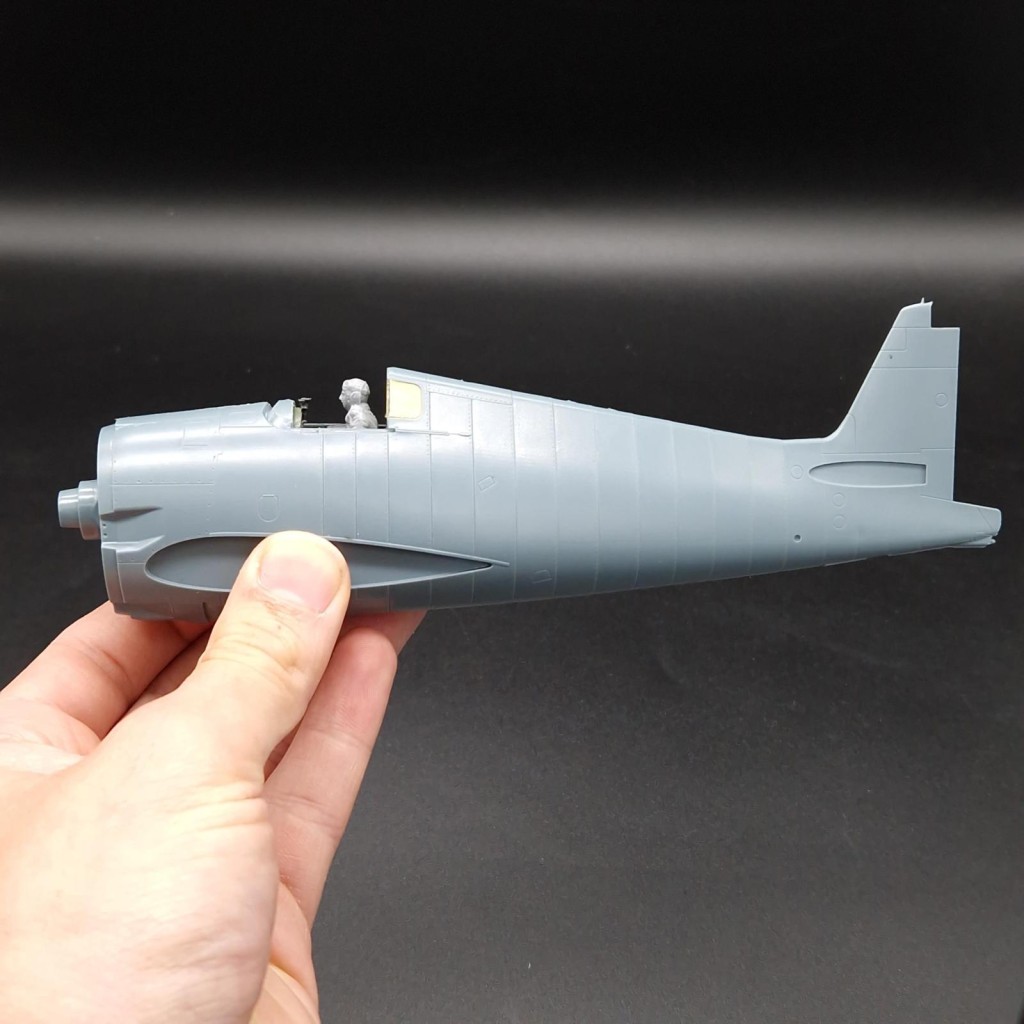Thank you all!
Got a few builds going on at once at the moment, so a bit of time was spent on an A6M2 when the paints arrived for it. I did do some basic work on the Hellcats however.
First Steps, the Cockpit
Unsurpsingly we start with the cockpit on this kit. For context, the Eduard F6F first came out in 2008 which isn't old but I would say Eduard have progressed in quality greatly over the years, there is definitely a noticeable difference in quality from their 'older' kits I've built (Fokker Dr.1, D.VII, Hellcat) compared to their kits in the recent few years.
With this the first thing to point out is a very sparse cockpit detailing, a lot of it is actually just plain and is clearly designed around the use of either photoetch or decals. This is disappointing as I wasn't quite expecting this as every other Eduard kit I've built I've felt has had superb moulded details in this area, and as these are both the 'Overtree' sellings I don't actually have any decals for the cockpits.
As such I did my best, the black panels were quickly masked and sprayed on one by one by going off of what I could see in photographs, but even so it is lacking some buttons and switches.
Of course, without decals I had to resort to just painting the instrument panel. It's not the finest work in the world (a worker shouldn't blame their tools and all, but I do need to get round to buying some less frayed brushes!) but it will do.
With that the fuselage could be assembled, of note is that the tailwheel needs to be glued in place before the fuselage is sealed but luckily this is really only going to be painted the underside colour so not a lot of masking would be required if wheels down. Building it wheels up was simple, the holes were the wheel goes in was cut out and part of the wheel chopped off, its a quick 2 minute job. You also need to add the windows behind the pilot that are a characteristic of the earlier F6F-3 before gluing, I added these with Krystal Klear and then masked them off. With that done the two halves were added, of note in this is the lack of guideholes to align the fuselage which could cause an issue.
-

1. I'll be using Tamiya's P-47 pilot for this, it's not Navy sure but you can hardly tell the difference with soft moulded pilots anyways and paint will be the thing that makes it look different.
The Wings and Cowling
I also started to assemble the wings so I could work out what the best way to tackle the wheels up modification would be, it doesn't seem particularly difficult but one panel will need to be scratchbuilt and I'll show that off when I get to it. The two of the three panels in the kit that the undercarriage has fit well enough, and since the wheels come in halves just adding the one visible half allows it to fit into the bay decently well. I found that removing the detailing here makes life easier and should have been done before assembling the wing.
For some reason though I had issues with one of the wings sort of collapsing in on itself, lots of glue plus using the handle side of the tweezers to prop it up solved it. This will need a fair bit of sanding later
It is interesting how the wing glues on, I wonder how strong this will actually be.
I also assembled the cowling, which actually fits not too bad and won't fall off by itself. This should allow it to be painted on the model, removed and then the engine popped on for final construction.
With that we are actually not all that far off of painting, all we'd have to do is build the horizontal stabilisers and the rudder, but of course the task of sanding and removing seamlines is going to be the time sink.